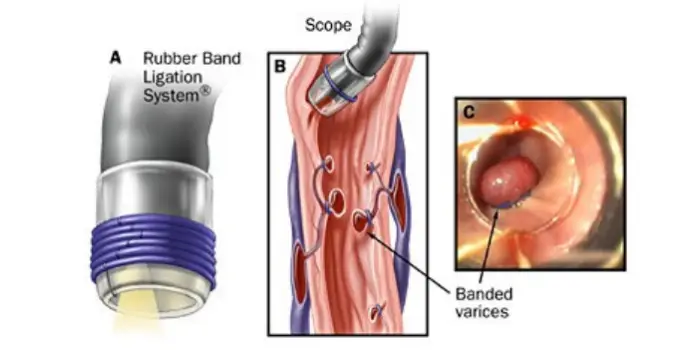
Endoscopic Variceal Ligation Treatment in Mumbai
Patients with cirrhosis who develop portal hypertension (ie, increased pressure within the portal venous system) are at risk for complications, including bleeding from esophageal varices. Endoscopic variceal ligation (EVL) was developed in an effort to find an effective endoscopic treatment for esophageal varices with fewer complications than endoscopic sclerotherapy (ie, endoscopic injection of a sclerosant solution into the varices). The EVL technique is similar to hemorrhoidal banding; it works by capturing the varix within a small band, resulting in occlusion from thrombosis. The tissue then becomes necrotic and sloughs off in a few days to weeks, leaving a superficial mucosal ulceration that will heal completely. EVL avoids the use of sclerosant solution and thus eliminates the risk of transmural injury to the esophageal wall that often occurs after endoscopic sclerotherapy.
The use of EVL for treating esophageal varices was first reported in 1988. Since then, advances in the technique have led to its routine use for treating patients with esophageal varices. One major advance was the development of the multiple-band ligating device, which has simplified and improved the safety of EVL.


